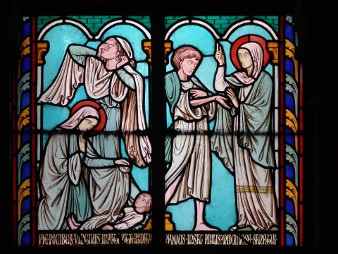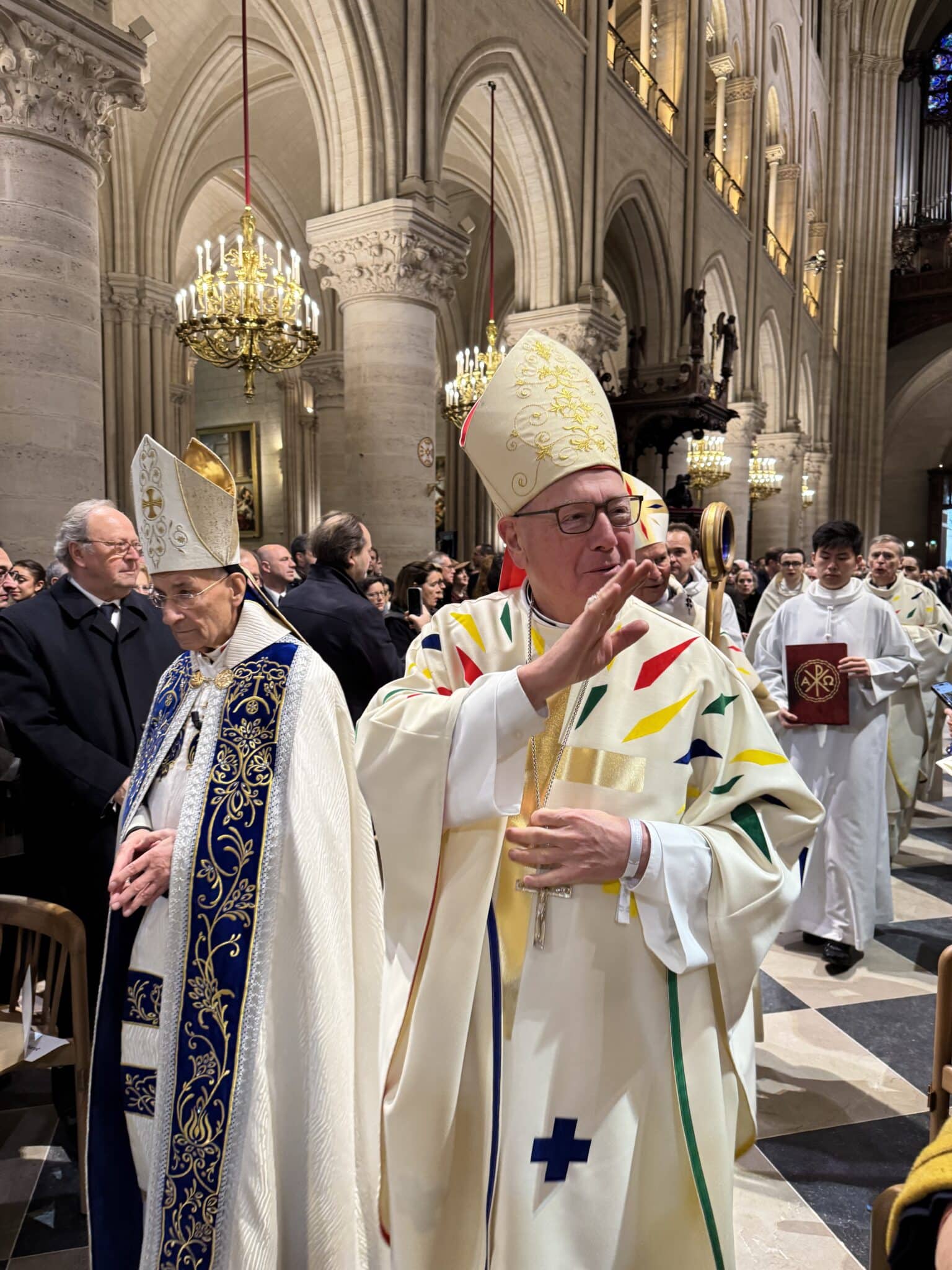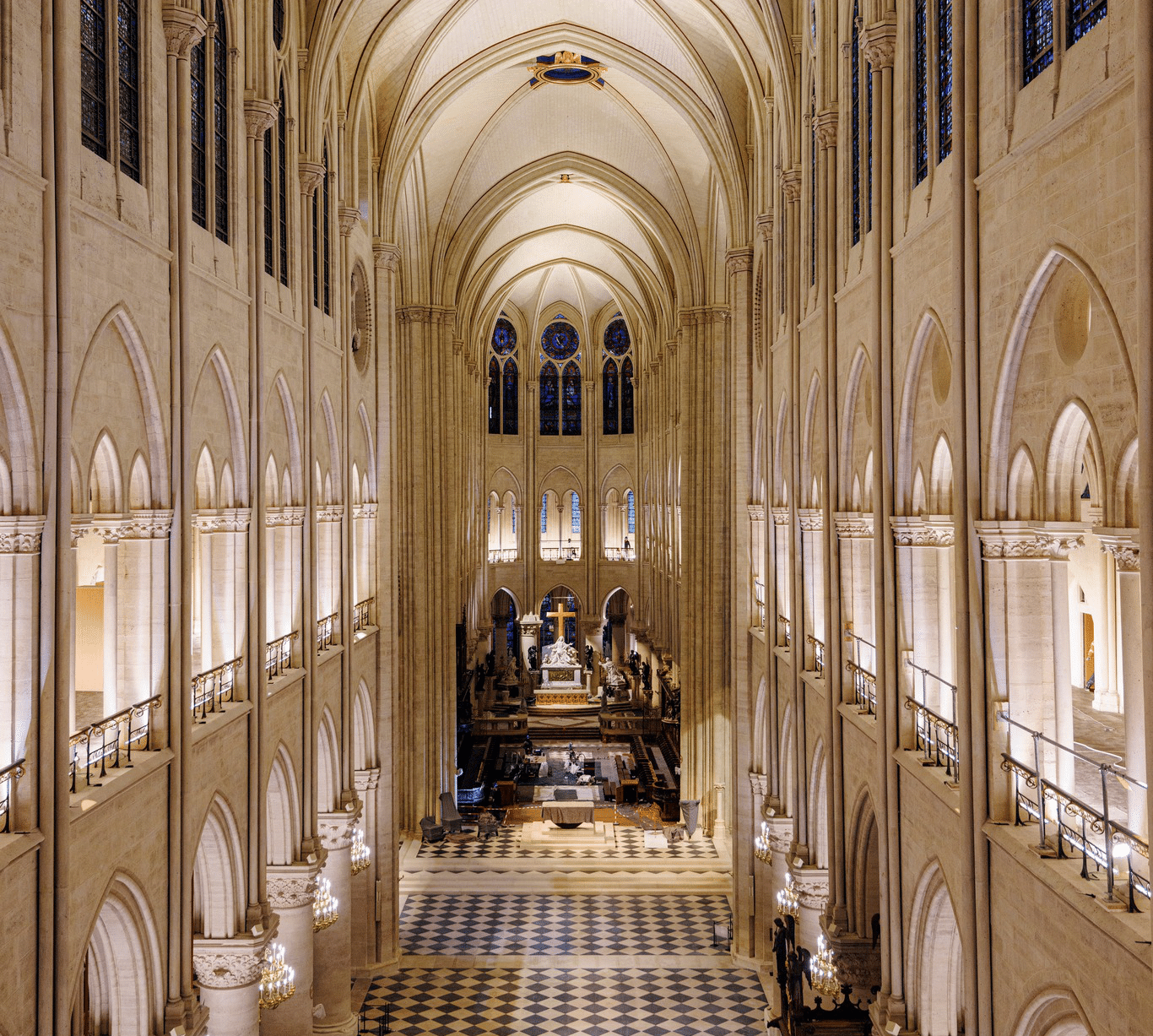Notre-Dame Cathedral is no stranger to disease, plagues and the myriad other challenges humanity has faced during her more than 850-year-existence. Over the centuries, Notre-Dame Cathedral has provided people with solace and relief, and even at times she provided a place in which to be cured. During the Middle Ages, the cathedral served as a hospital for the sick affected by various plagues, sometimes housing as many as 600 patients.
As an important religious center, Notre-Dame de Paris has also been associated with healing miracles, perhaps most powerfully with the miracle attributed to Saint Genevieve in the 12th century.
Saint Genevieve, Patron Saint of Paris
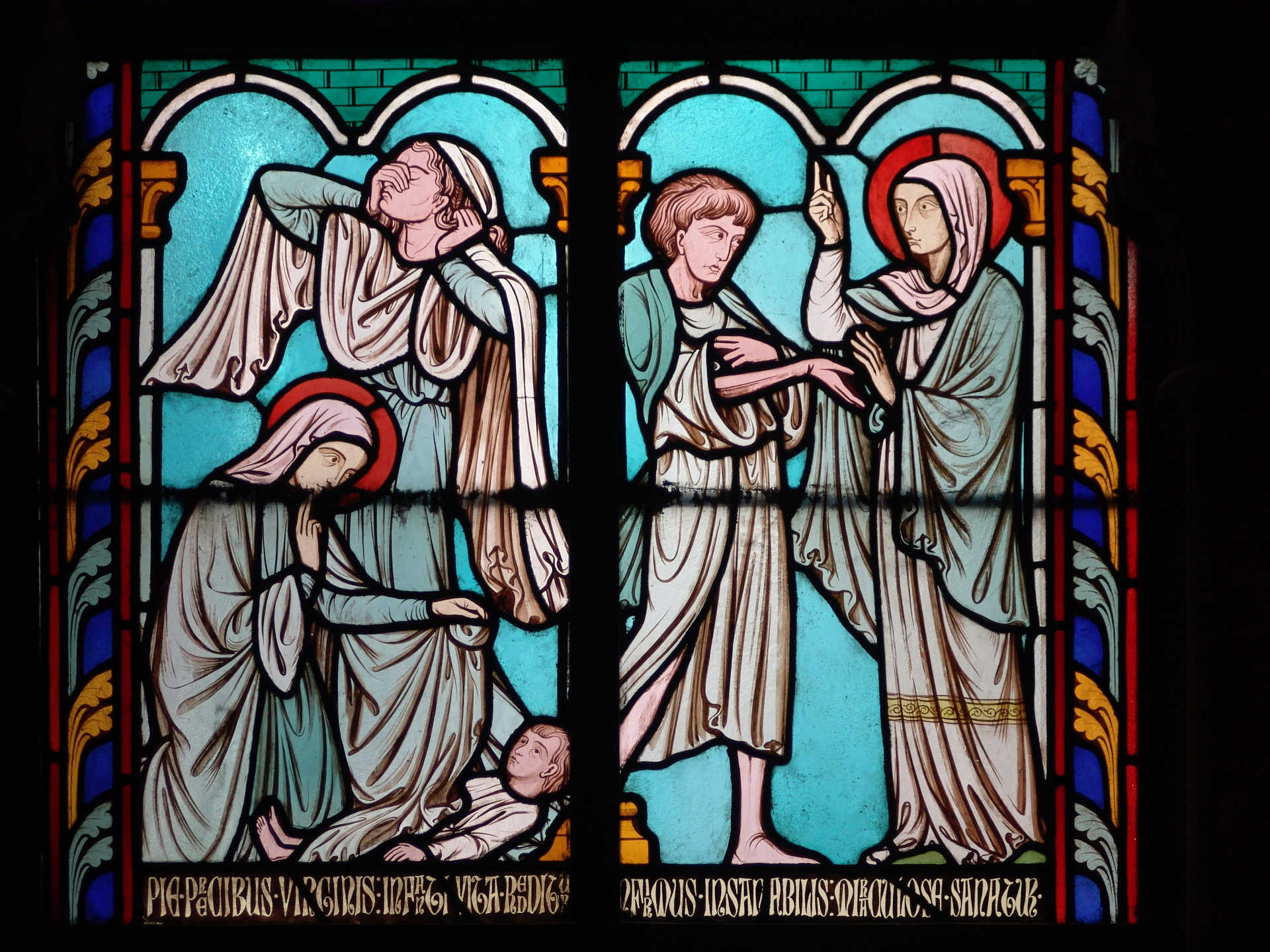
Saint Genevieve is the patron saint of Paris. Genevieve (419 – 512 AD) is best known for having saved Paris from Attila the Hun in 451 AD. She was also venerated as a healer, and, in Paris specifically, she was invoked for deliverance from floods and excessive rain.
Saint Genevieve’s major feast day is January 3, but she has an additional feast day on November 26, marking her healing and the miracle of the “Burning Ones” (miraculum ardentium).
Saint Genevieve and “Le Mal des Ardents”
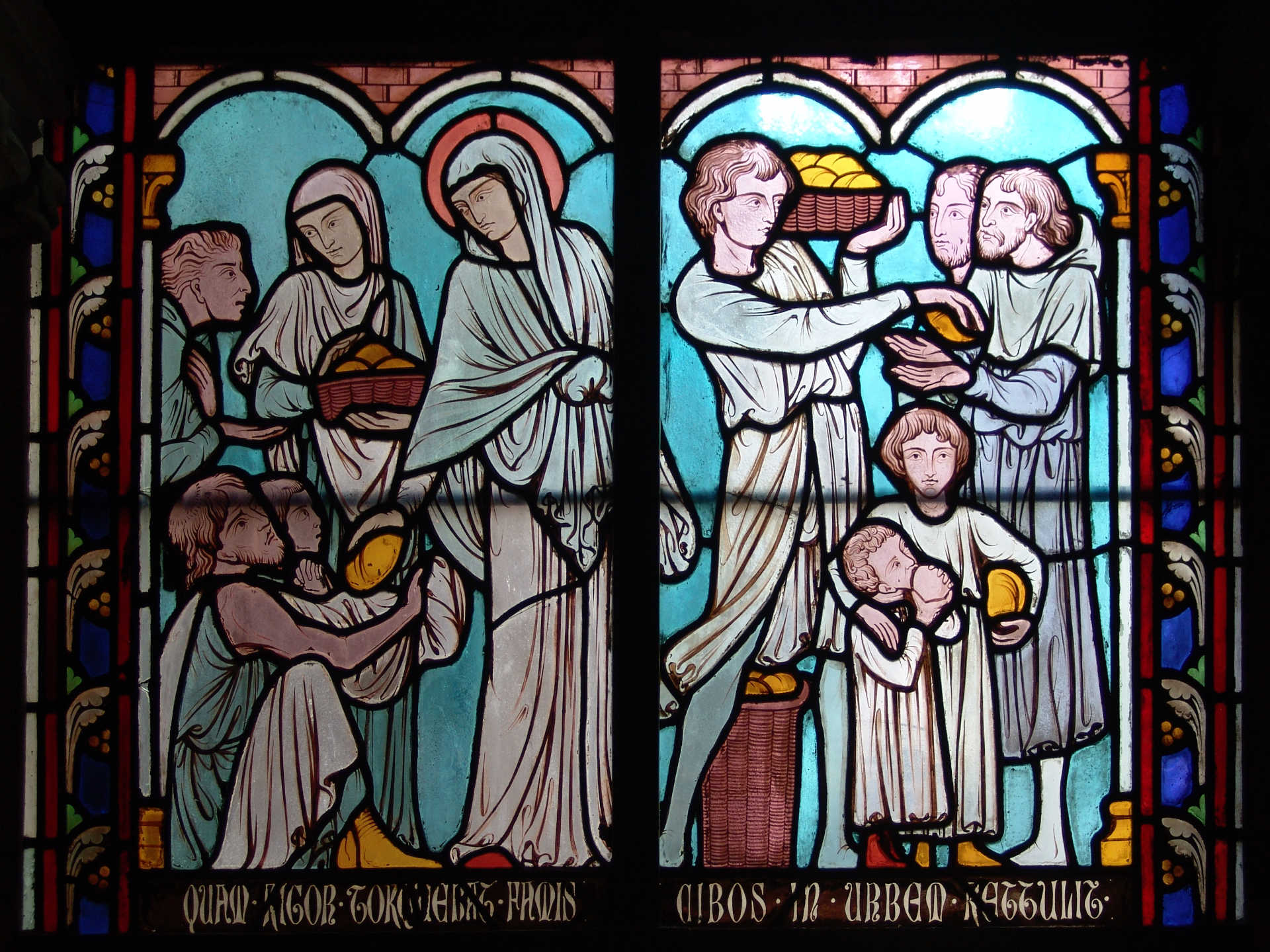
In 1129, during the reign of King Louis VI, Paris was stuck by an epidemic outbreak known as the “mal des ardents”. It was later attributed to ergotism, also called “Saint Anthony’s fire”. This long-term ergot poisoning is typically acquired by ingesting a fungus that infects rye and other cereals used in breadmaking in the Middle Ages. The 1129 outbreak spread terror in Paris and across France, and thousands died.
In those bleak times, Parisians found solace in their patron saint and in Notre-Dame de Paris. They offered supplications to Saint Genevieve’s relics in Notre-Dame Cathedral, and the mal des ardents came to an end, attributed to her divine intervention. Pope Innocent II declared this to be a miracle, and that it would be commemorated every November 26 in the “Feast of the Burning Ones”.
Saint Genevieve and Notre-Dame Cathedral
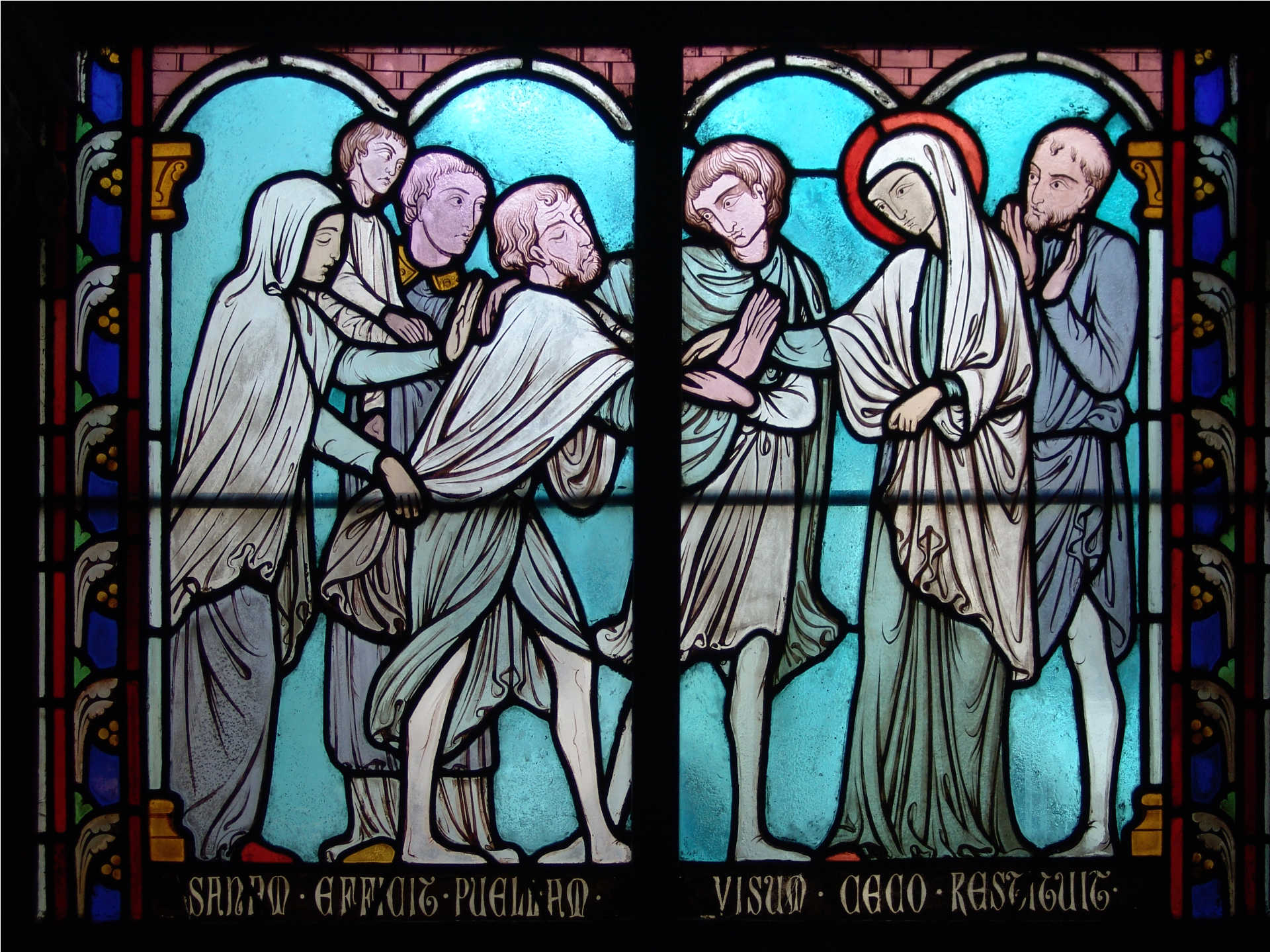

Notre-Dame Cathedral’s spire contained relics of Saint Genevieve, along with the relics of Saint Denis. Tragically, these relics are presumed to have been destroyed in the blaze that consumed the spire in April 2019.
Notre-Dame de Paris has seen sickness, revolution, floods and fire – and she has stood steadfast through it all. She continues to stand as a symbol of hope through this current pandemic, undiminished by her scars and asking that we join together to help, care for and support each other, even during this period when we must stay physically apart.
Much has changed in the world since 1129, but Notre-Dame Cathedral will always be a symbol for those in need of hope and healing, and we hope that you find solace as she watches over us all through this recovery.
Statue of Saint Genevieve adorning the façade of Notre-Dame Cathedral.
